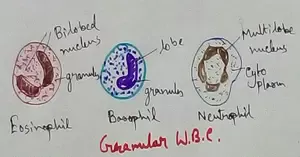The Adjectives and its Kinds
Adjectives are a writer’s best instrument to wield magic, to conjure images, to express emotions. They are the words that describe or modify Nouns or Pronouns, offering variety, spice and vividness to our sentence structures.
Mostly used to identify or qualify individual people and unique things, they are mostly positioned before a noun or pronoun, which it describes.
Adjectives are an integral part of our Parts of Speech. Consider the use of adjectives in the oft-repeated phrase, consuming all letters of English alphabets:
The quick brown fox jumped over the lazy dog,
The types of adjectives that we are dealing with today falls under the following categories:
1. Descriptive Adjectives: Used to describe nouns and pronouns.They add to the quality and provide added information about the word they are modifying.
Example: beautiful, lazy, nice, cruel etc.
Usage: The dog is ferocious
The ferocious dog jumped over the hedge.
The flowers have a nice smell.
2. Quantitative Adjectives: Describe how much or how many.
Example: Numbers like One, Two, Three etc.
General Quantifiers: many, half, a lot, whole
Usage: I only have one son.
I loved finishing the whole cake.
3. Demonstrative Adjectives: They point out to which Noun or Pronoun we are referring to, in a sentence.
Examples:This, that, these, those
Usage: That piano used to be mine until I sold it.
Please put these biscuits on a plate.
4. Possessive Adjectives: They show possession or to whom a thing belongs to.
Example: My, our, his, her, their, its
Usage: Whose book is this? Its mine.
5. Interrogative Adjectives: Are used to ask questions and make enquirers.
Examples: Which, what, whose (They are only considered as adjective if immediately followed by the Noun)
Usage: Which colors is your favorite?
What book are you referring to?
Whose house is the party going to be held?
6. Distributive Adjectives: describe specific members out of a group.These are used to point out one or more individual items or people.
Examples: Each(used for individual members in a group), every(Used for generalization within a group), either (One of the choices between two), neither(None of the choices between two), any(No specific preference and the choice becomes irrelevant)
Usage: Every dog has his day. (Generalization)
7. Articles: There are only there articles in the English language a, an, the and technically they have a separate entity in the Parts of Speech in English Grammar but they also serve as Adjectives.
While ‘a’ or ‘an’ is known as indefinite article , commonly used before a consonant or vowel sound respectively , ‘the’ is the definite article.
Usage: An egg a day keeps the body strong.
The egg is rotten.
8. In definitive Adjective: Used to describe non-specific things.
Examples: any, many, no, several and few
Usage: Several bananas are rotten.
Few bananas are edible.
No bananas are left.
9. Co-ordinate Adjectives: Are those that are separated with commas or the word ‘and’ and are used in a series to modify the noun. However, in some cases they may be co-ordinates not separated by commas structurally.
Usage: The night was dark, lonely and exotic.
The green delivery van rushed through the traffic.
10. Attributive Adjectives: Talk about specific attributes, qualities or features.
Examples:
- Observation Adjectives indicate value or subjective measure like real, interesting,perfect etc.
- Size and Shape Adjectives talk about objective qualities like big, small,round, poor, wealthy etc.
- Age Adjectives refer to a person’s age specifically or in general, e.g. : old, new, young, five year old.
- Color Adjectives refer to the color .e.g.: blue, green etc.
- Origin Adjectives refer to where a person, place, animal or thing belongs from. e.g. Persian rug, Indian man etc.
- Material Adjectives indicate what is the noun made of, e.g. gold, silver, glass etc.
- Qualifier Adjectives make the Noun more specific, e.g. luxury car, pillow cover etc.
English Grammar and Composition
From The Adjectives and its Kinds to HOME PAGE
Recent Articles
-
Formed Elements of Blood | Erythrocytes | ESR |Leukocytes |Neutrophils
Jan 15, 26 01:25 AM
Formed elements formed elements are constitute about 45 % of blood afeias haematocrit value packed cell volume mostly of red blood corpuscles and are of 3 types- erythrocytes, leukocytes and blood pla… -
What Is Plasma? | Blood Plasma | Proteins | Nutrients | Cholesterol
Nov 07, 25 10:29 AM
Blood is a mobile fluid which is a connective tissue and is derived from the mesoderm like cell any other connective tissue. Colour of blood is reddish and that flows inside the blood vessels by means… -
Disorders of Respiratory System | Tuberculosis | Pleurisy | Emphysema
Oct 28, 25 11:39 PM
Tuberculosis is very common disease and is caused by a type of bacteria called Mycobacterium tuberculosis. This disease causes different trouble in the respiration and infection of several parts of th… -
Regulation of Respiration | Respiratory Centres | Inspiratory Area |
Oct 14, 25 12:13 AM
Respiratory Centre is the area that controls the rate of respiration and it is observed to be located in medulla oblongata and pons. Respiratory Centre has the following will dispersed components like… -
Explain Transport of Gases | External Respiration | Tissue Respiration
Oct 09, 25 11:35 PM
In humans gaseous exchange is completed in the following ways the steps are - External Respiration or Breathing - Breathing in false taking in of Oxygen and giving out of carbon dioxide in the body. M…





New! Comments
Have your say about what you just read! Leave me a comment in the box below.